How to Design a Sales Enablement Framework That Really Works
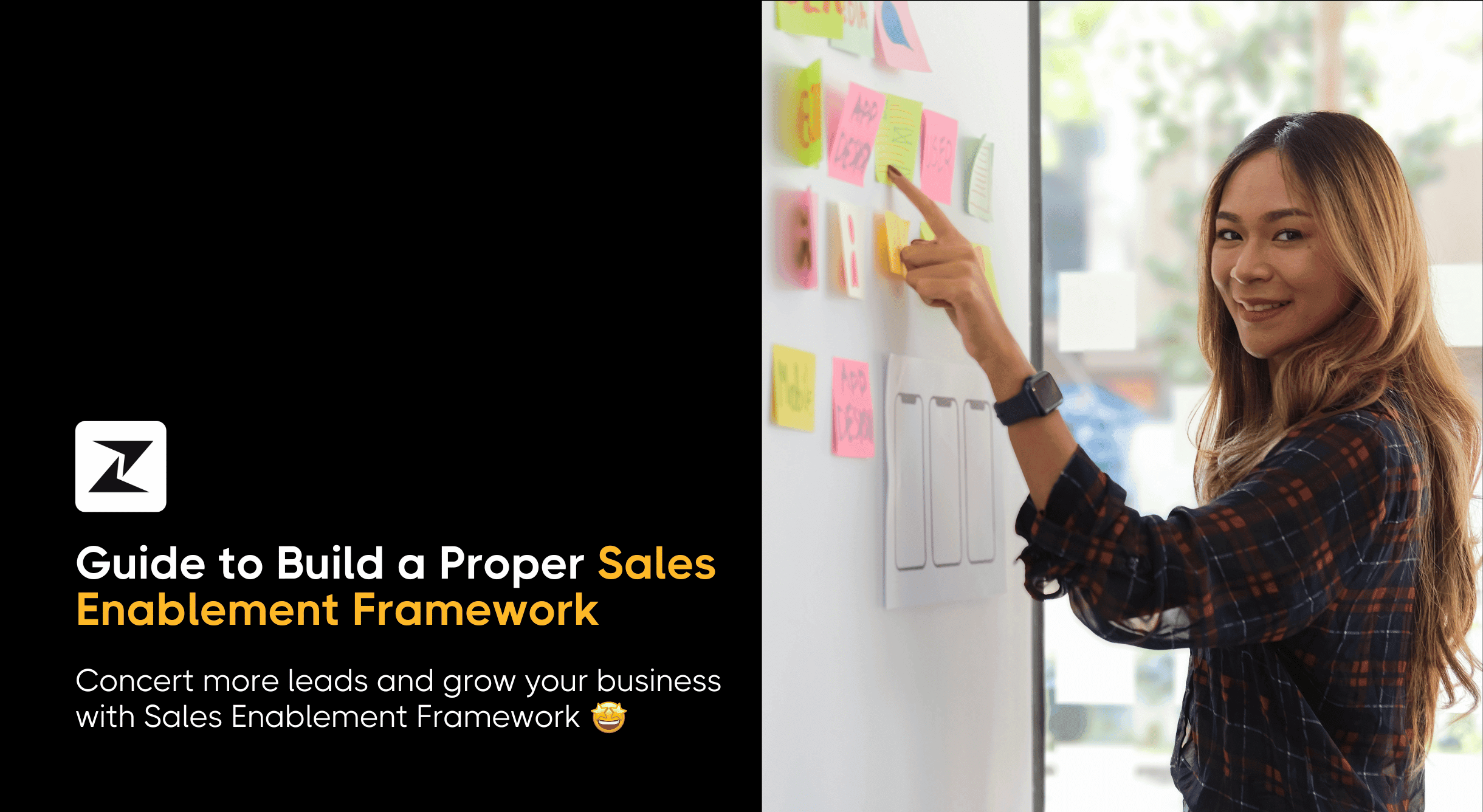
Let's imagine you are on a road trip, and you have a map that shows you the way and marks the stops to ensure a smooth and enjoyable journey without the fear of deviating.
The same goes with the sales enablement framework - it will guide you throughout your sales journey. It outlines the essential tools, strategies, and the path your sales team should follow to drive more leads.
Over the past few years, one thing we should note is that the sales engagement trends have shifted significantly.
So, to stay ahead of the game, you need to leverage the right sales enablement strategies and frameworks. These will not only prevent your sales efforts from going to waste but also help increase productivity and revenue.
If you have clear strategies, you can choose the right framework to implement it. But you might be wondering how to build successful sales enablement frameworks that help your business grow.
Let me help you with that. In this blog post, I'll provide you with the steps on how to design a sales enablement framework that allows you and your sales team to achieve predictable sales results.
What is a sales enablement framework?
Before we jump into the actual topic, let's touch on the concept of sales enablement. I guess you're familiar with it; if not, no worries - I'll give you a quick overview.
Sales enablement is an essential aspect of the sales process. It is all about providing the necessary resources like content, tools, and valuable information to your sales team. This will not only simplify your sales process but help in achieving your business sales goals.
Now, think of sales enablement as the foundation and the sales enablement framework as the plan you will use.
In this plan, the key components include collaboration between your sales, marketing, and customer support teams, simplifying your sales process, and maximizing your productivity and customer satisfaction.
Now, you're familiar with the concept of sales enablement and the foundational role of the framework. To build the perfect sales enablement framework, you need an advanced sales enablement platform.
For example, Zixflow is a sales enablement platform that is not just a typical CRM. It consists of engagement and automation capabilities, making it an all-in-one workspace.
Zixflow makes it easier for you to track leads by helping you manage all the details of your potential customers in one place.
Think of it as your super-smart assistant, who tells you about your customers and when you need to reach out to them, ensuring you never miss an opportunity.
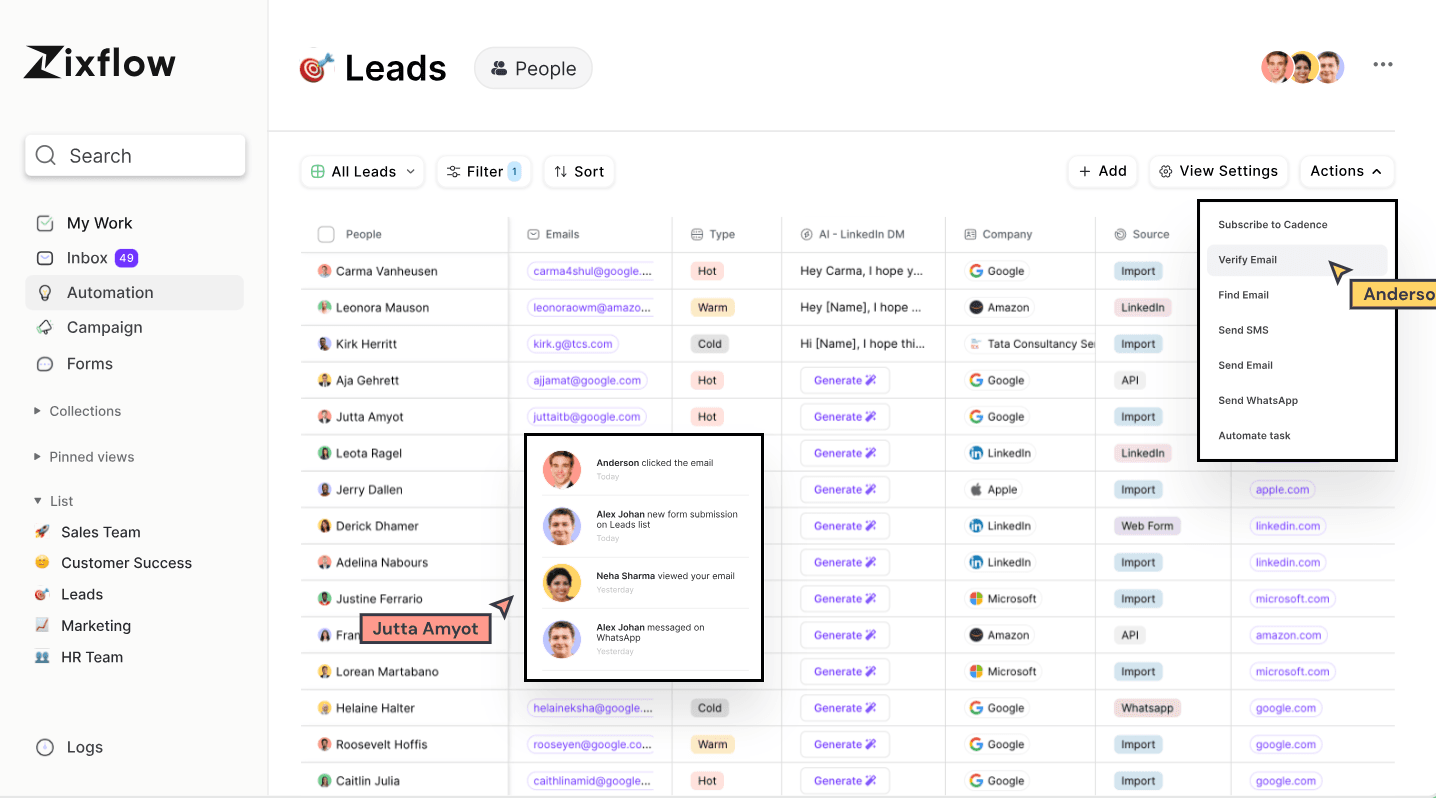
And, according to Zapier, 94% of workers perform time-consuming, repetitive tasks daily. If you might be spending a significant portion of your day on repetitive tasks, Zixflow’s workflow automation will make your life easier.
For instance, you can set it up to send follow-up emails to your leads, schedule appointments, and remind your team about important tasks. In short, it’s your real time-saver.
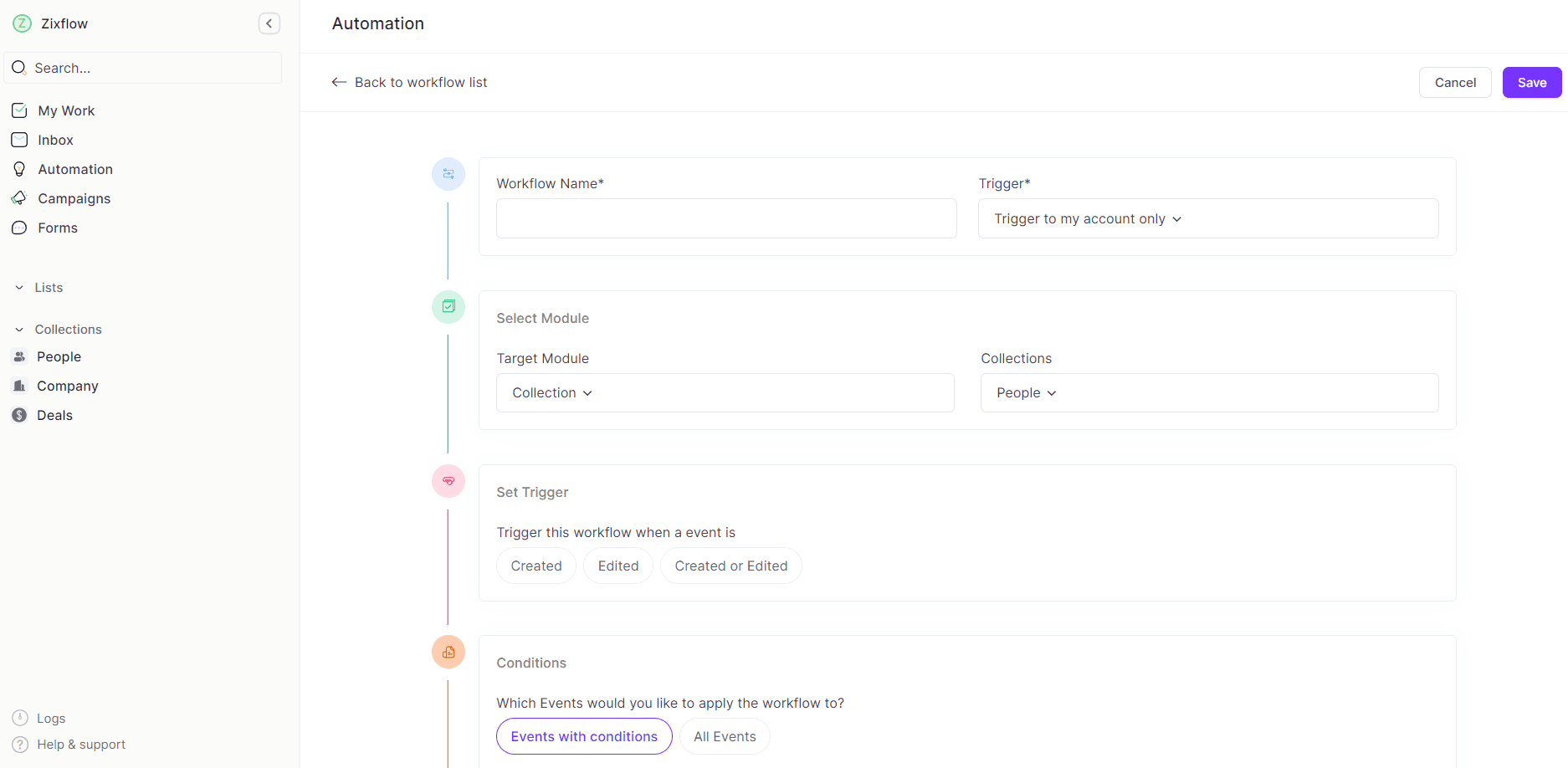
Why is the sales enablement framework important?
A sales enablement framework brings a structure to your sales process. At its core, it’s a strategy designed to help your sales team increase conversion rates and allows your team to focus mainly on sales.
Let’s look at how a sales enablement framework works for your company.
Empower your sales team
You can empower your sales team to offer world-class customer service with effective sales enablement. It aims to provide them with the right resources, tools, and knowledge to ride the complex sales wave efficiently.
A study found that sales reps who use a sales enablement platform are 50% more likely to hit their quota. So, if you want your team to achieve your business sales goals, consider one of the best sales enablement platforms like Zixflow.
Ensures consistency
We know that the customers and prospects highly value consistency. Because it builds trust and fosters reliability in their interactions with the sales team, a simple sales enablement framework helps every sales team member follow a consistent sales process, allowing them to provide a similar experience to all the customers and prospects.
For example, let's say you have a list of potential customers interested in your product or service. By utilizing Zixflow’s multi-channel sales engagement, you can run marketing campaigns and send emails, SMSs, and WhatsApp messages to your customers.
Throughout this process, Zixflow helps you and your sales team to provide consistent service and information to them. As a result, it builds trust in your product or service.
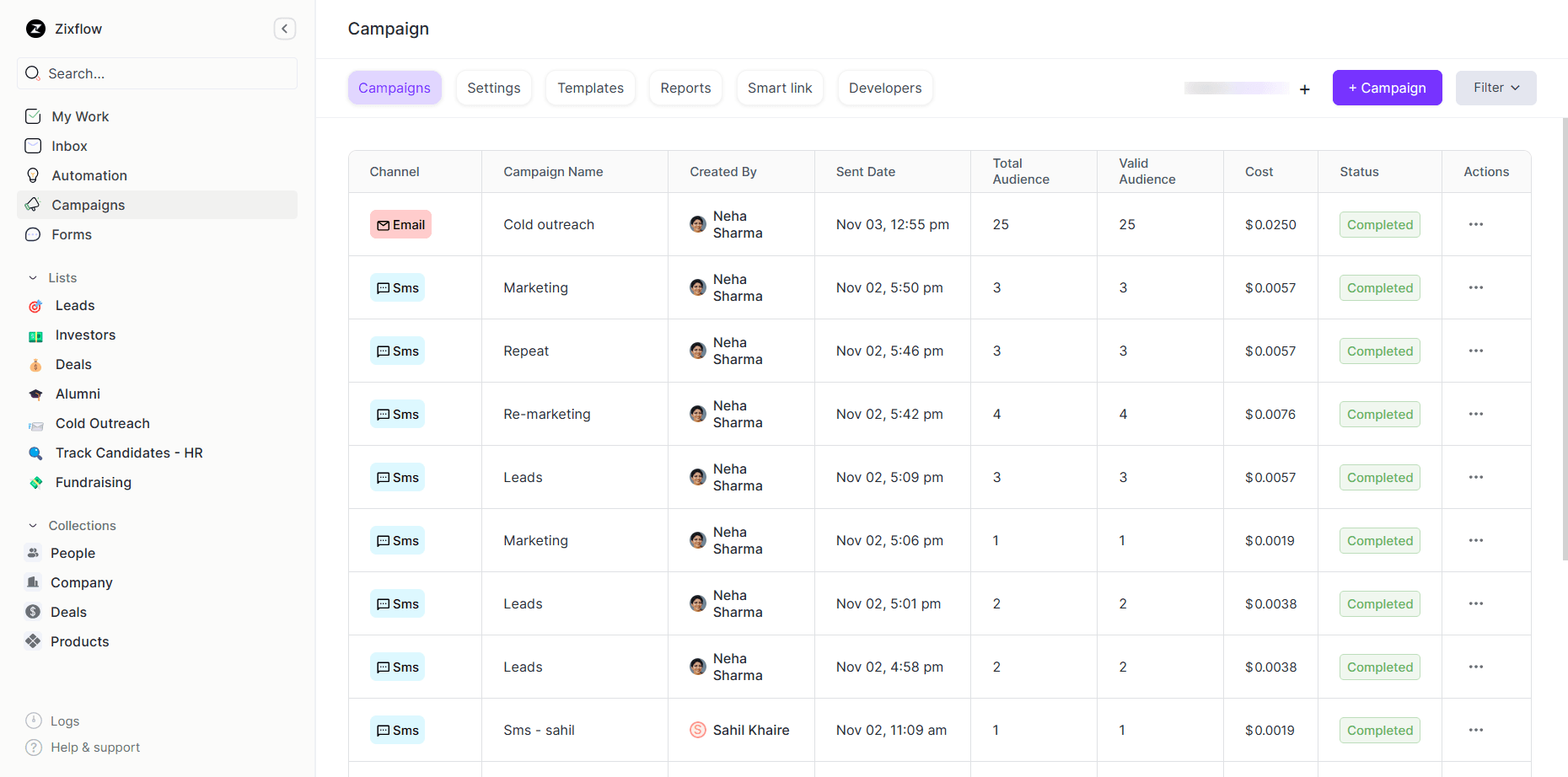
This is the power of a well-implemented sales enablement framework. It ensures that every team member follows a standardized sales process, providing a uniform experience to all your customers.
Scalability
Your sales team can scale efforts more effectively through a sales enablement framework. This is possible because it provides a blueprint or guidelines that the sales team can apply in different industries and markets.
According to the 2023 State of Sales Enablement Report by Sales Hacker, 73% of sales enablement professionals say their framework is scalable to support future growth.
This indicates businesses can scale their sales operations and reach their revenue targets with a sales enablement framework.
Measurable results
A framework often includes specific, quantifiable data or metrics to assess the success or effectiveness of your sales enablement efforts.
Some examples of measurable results include sales revenue, conversion rates, customer satisfaction scores, sales team productivity, and content engagement.
As a result, sales enablement efforts allow you to make data-driven decisions to enhance your strategies further and achieve your sales targets.
Steps to design a sales enablement framework that works
Building a sales enablement framework is always complex, but having ideas up your sleeves can be helpful. With that said, here are a few steps to design a sales enablement competency framework tailored to your business needs.
Define your sales process
Before building a sales enablement framework, define your sales process. Visualize the sales journey and explore the key stages of the sales process. Let’s have a look at the stages of a sales cycle below.
Prospecting
The first stage of the sales process involves identifying the potential customers who could benefit from your product or service and connecting with them through sales rules of engagement. This way, your sales reps will start the sales process.
Making contact
After you identify and connect with the right prospects, you need to reach out to the prospects through emails, calls, or connecting on social media. In this stage, you will gather the prospects' information, such as their pain points, budget, and decision-making process.
This proactive approach helps you to understand your prospects and provide solutions that align with their requirements.
For example, let’s imagine you love online shopping. One day, while browsing an online clothing store, AJIO, you’ll notice a beautiful collection, and you just decide to add a few items to your cart.
A few hours later, you’ll receive a friendly Whatsapp message from AJIO, saying you left something in your cart or need any assistance with your shopping or even provide a good discount on the selected brands.
This simple yet effective outreach is the best example of how you can connect with your prospects.
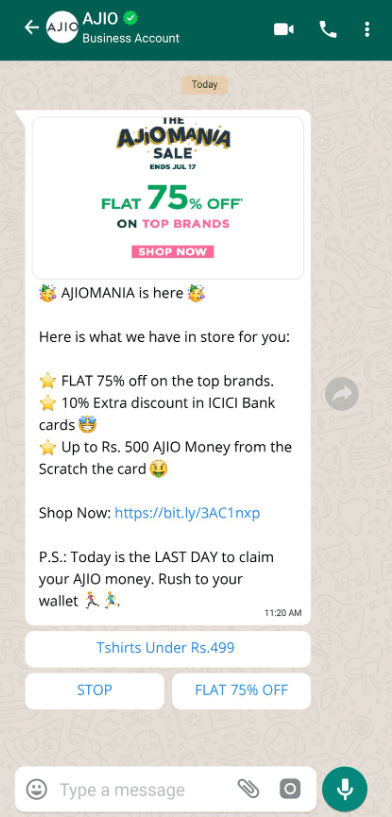
Engagement
During this stage, you will work closely with the prospects or customers. Ensure to establish relationships with customers by gaining an understanding of their needs. Because, by listening to their needs and concerns, you can respond to them with valuable solutions that meet your customers’ specific requirements.
As you engage with your customers, make sure to focus on providing personalized experiences that keep them coming back for more.
Think about Amazon - after you purchase something from Amazon, they might send an email asking you to take a survey so that your feedback helps them to provide you with a better shopping experience.
This kind of approach makes your customers happy and keeps them coming back.

Presentation
This is the key stage to attract your prospects. Once you build a relationship with the prospect, explain how your product or services address their needs.
You will get the opportunity to present the features or benefits of your product or service. This helps the prospects to understand why your product or service is the best solution for their needs.
Suppose you have a company that sells eco-friendly products. In the presentation stage, you will showcase your product features and how it will address the specific needs of your target customers who are looking for eco-friendly products for their homes. This approach can attract and engage prospects.
Closing sales
The final step is to follow up with the prospects and close the deal by discussing the pricing, terms, and conditions. Ultimately, turn your prospects into satisfied customers.
This sales process helps your sales team identify the buyer's journey stage and develop the content that aligns most effectively. Here is a video for you on how to design a simple and proven sales process.
Identify sales enablement goals
The next step is to identify your business goals. We all know that a journey without a goal or destination may not be meaningful or worthwhile. Right?
Likewise, even if you have a good sales enablement program, without clear goals or objectives, you can’t see the actual results. To make your sales enablement effective, you need strong goals and objectives.
For example, your primary sales enablement goal may be to reach 25% more sales in a year. That aligns perfectly with your sales goal. Having such clear objectives can give your framework-building efforts a definite focus.
Develop a sales enablement strategy
Now your primary goal is in place, and you’ve set specific measures to track the progress of reaching your goal, it’s time to develop your business sales enablement strategies. Of course, this may involve a lot of things.
Start by creating clear and concise sales collateral that gives you valuable insights and helps you to address customer needs. Develop training programs for your sales team to update them on the latest market trends and product knowledge.
Plus, remember to encourage open communication between the sales and marketing teams, as they are the linchpin of the organization that drives business growth.
Lastly, collect feedback from your sales team, customers, and prospects to identify the areas of improvement and make necessary changes.
Their insights highlight the areas where improvement is required. By adapting to the shifts, you can stay ahead of the curve and reach your business goals.
Leverage advanced technology to streamline the sales process, like Zixflow. It not only allows you to track the activity of your leads across multiple channels, but it will also provide you valuable insights into their behavior and preferences.
This, in turn, helps you build relationships with leads to seal the deal and gives you an idea of how well your campaigns are going so you can make smart decisions.
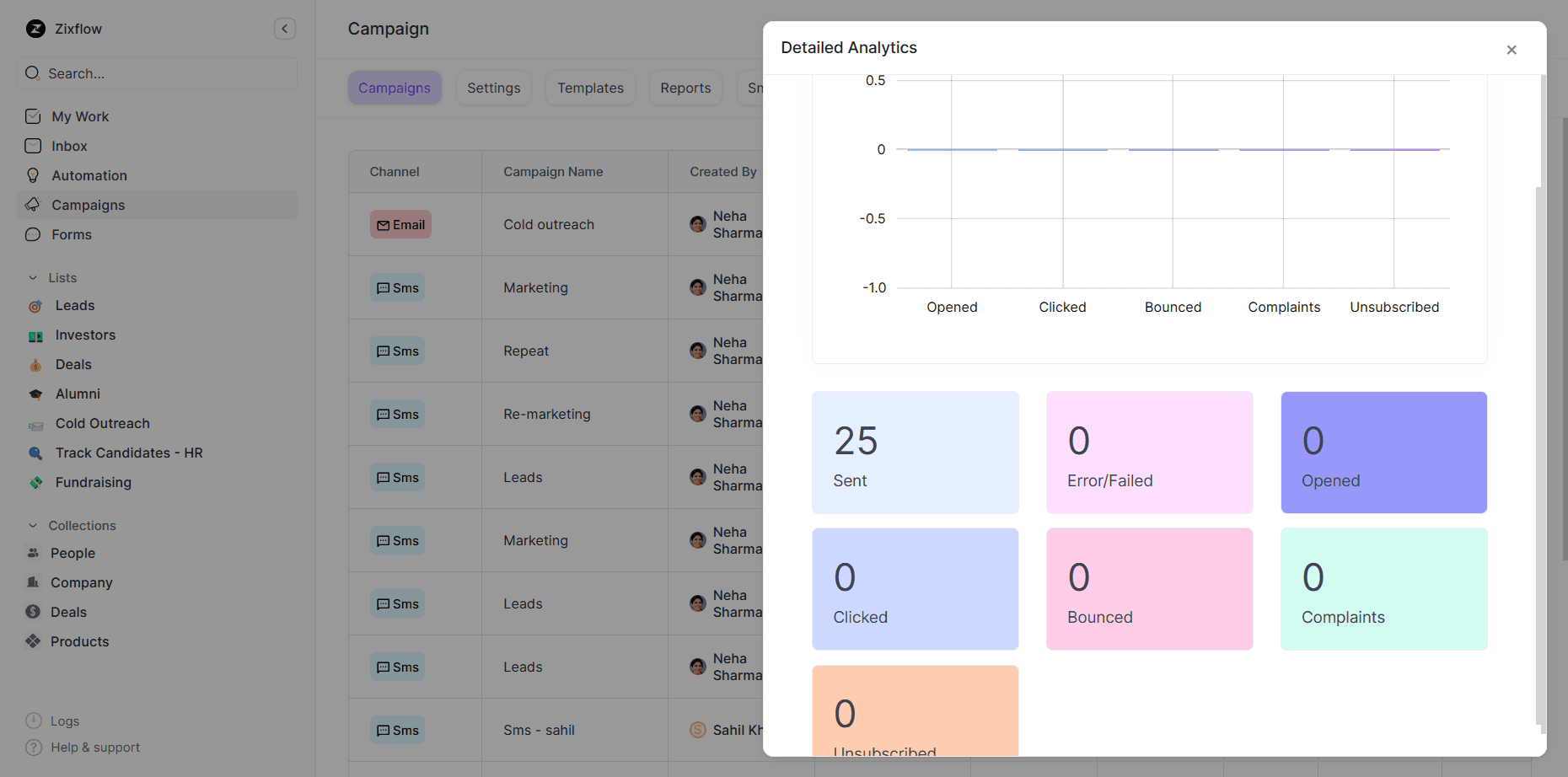
Track KPIs
After building your sales enablement strategy, the next step is to monitor your sales Key Performance Indicators (KPIs). These are like scorecards that help you measure how well your sales enablement strategies work.
KPIs help you assess various aspects of your sales enablement process, such as the automation of tasks, how you’re reaching out to your potential customers, and the success rate of your marketing campaigns.
"If you can't measure it, you can't improve it." - Peter Drucker
By monitoring the metrics, you can lay the groundwork for effective business operations and gain valuable insights that align with your business goals. It is all about making sure you and your team's hard work is paying off, and your business is on the right path to success.
Here are some KPIs your business should track:
Quantitative KPI
This KPI relies on numerical data to measure progress toward your business goals. Most KPIs that fall into this quantitative category are the number of closed deals, customer service tickets, or annual revenue.
Qualitative KPI
This KPI highlights non-numerical data like customer satisfaction levels measured through feedback and surveys or employee engagement.
Lagging KPI
This KPI measures the results of past actions like sales revenue, customer reviews and ratings, and return on investment (ROI).
Leading KPI
This KPI is a predictive indicator that helps in predicting future sales, gives you the ability to plan, and make data-driven decisions.
Process KPI
This KPI allows you to know how well your new process is doing and highlight areas for improvement. For example, this process KPI tracks the time needed to resolve a customer support issue.
Well, as I mentioned above, you can utilize Zixflow to get insightful reports. It provides you with reports on various aspects like sales and marketing campaigns. These reports make it easy for you to measure your campaign's effectiveness.
Additionally, you need not worry about the data breach because Zixflow gives you control over access permissions to your dashboard. This combination of insights and security enables you to make informed decisions and secure your business.
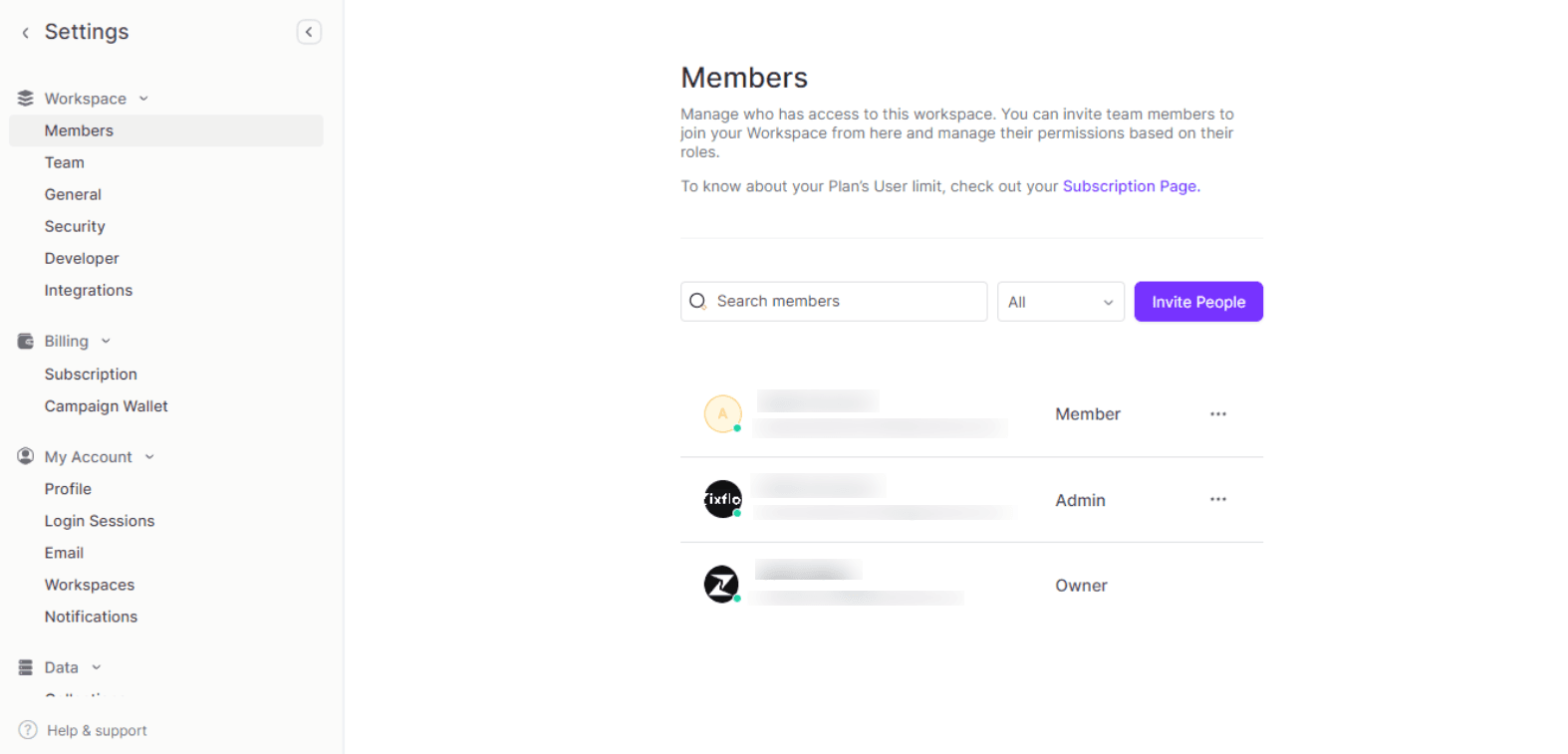
Implement a sales enablement framework
With your sales enablement strategy established and KPIs defined, it’s time for you to implement your plan. In this step, your strategy comes to life.
During this implementation phase, you need to focus on:
Developing and understanding sales personas
To whom are you selling? What are their needs and pain points? Understand the target customers and tailor your sales and marketing efforts accordingly. Here are some quick pointers on how you can develop and understand sales personas:
- Demographics: Collect data on age, gender, location, and job title to define your audience.
- Behaviors: Understand the browsing habits or social media usage of your target audience.
- Challenges: Identify the common issues your audience faces and how your product or service can address them.
- Communication preferences: Learn how they would like to communicate.
- Feedback: Conduct surveys and collect feedback to refine personas.
Identify content needs for each sales funnel stage
What kind of content do potential customers require at different stages of your sales pipeline?
For example, your customers may require some educational content at the beginning of the sales process and sales-focused content as customers move closer to the conversion stage.
For example, let’s talk about ‘Nike’, the sports brand you probably know.
When you start browsing to purchase their sports gear, Nike provides more information about their products through articles or blogs. They will show you what’s the best in their products, and you can even see expert tips.
As you get closer to buying, Nike might send you discounts or recommendations based on your chosen shoes.
This makes it easier for you to buy the best one, right? You can see Nike guides you throughout the process. This approach helps you to identify the needs of your customers at each stage of the sales funnel.
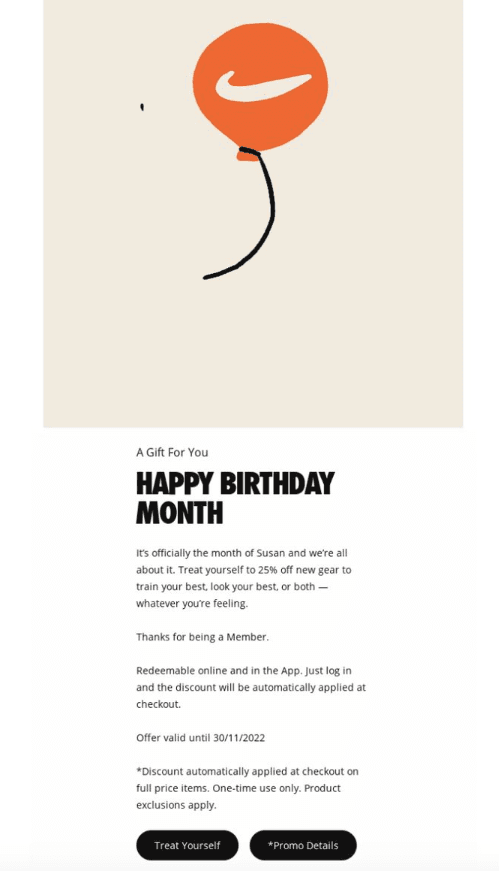
Foster communication and feedback loops between teams
Sales, marketing, and customer success teams must work closely.
When these teams work closely, your business can achieve higher conversion rates by creating a seamless customer experience, generating more qualified leads that help your sales teams close deals faster, and maintaining a positive feedback loop for continuous improvement.
Confused? Let me give you an example. Imagine you run an e-commerce business. Your marketing team created a new ad campaign that drives more website traffic and leads. Your sales team uses these leads to personalize the shopping experience.
After a successful purchase by your potential customers, your customer success team follows up and gathers feedback from them.
If this feedback loop continues, your teams can refine their strategies through enhancing communication, resulting in higher conversion rates, happier customers, and business growth.
Define relevant metrics that align with your sales enablement goals
Choosing your metrics helps you to track your progress easily.
For example, let’s say your goal is to boost product sales through an email campaign. Therefore, you must choose relevant metrics like email open rate, conversion rate, unsubscribe rate, and revenue generated.
Here is a video for you that explains how to create, plan, and execute a successful sales enablement framework.
Enhance sales enablement framework
The essential key to a successful sales enablement framework is improving it continuously.
In this final step, you must focus on refining and enhancing your strategies. Ensure to revisit your KPIs, goals, and the overall framework to strengthen the effectiveness of your operations.
This step is about evolution. So, incorporating experts’ tips on sales enablement and utilizing the experience gained from ongoing framework assessment is crucial.
By consistently enhancing your sales enablement competency framework, you can solve your most significant sales and marketing challenges and stay ahead of the competition.
Chart your path to success with the best sales enablement framework
Selling is a bit tricky, right? I totally get it! But with the right plan, you can successfully sell your product.
For that, all you really need is a good framework that helps you overcome the challenges of the sales landscape, encourages your sales team, and gets your business better results.
Check this out: According to a recent study by Gartner, 84% of sales reps achieve their quotas when their organization incorporates a best-in-class sales enablement strategy. That’s some solid proof that a sales enablement framework can make a huge difference.
But, to build a successful sales enablement framework, you need careful planning and execution. The steps outlined in this blog show you how to create a sales enablement framework that works for your business growth.
And Zixflow is one of the best sales enablement platforms that provides the right features to help you create an effective sales enablement framework for your business. And the best part is that it is free!
So, give it a try and take advantage of its features to reach your business goals.
